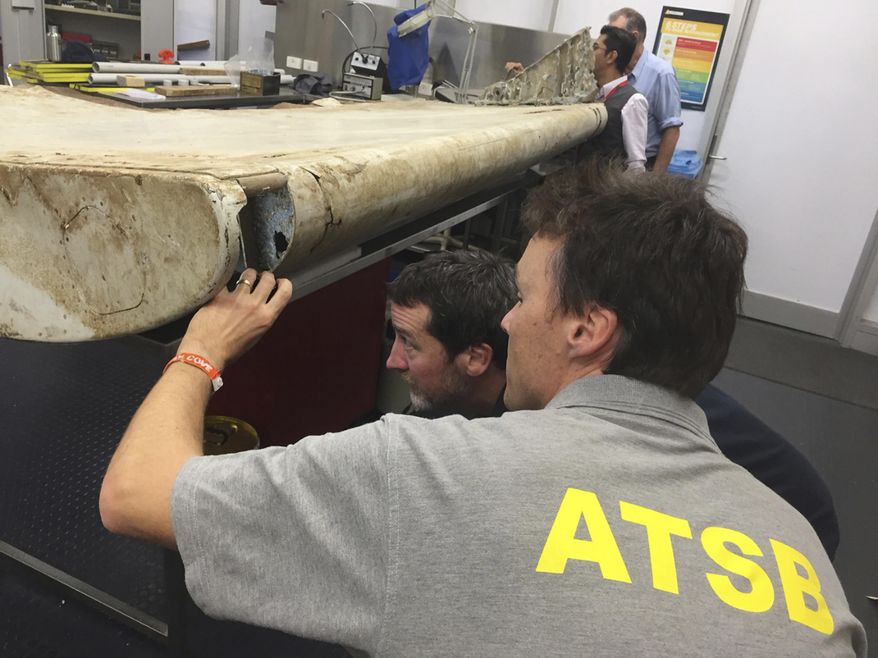
FILE - In this July. 20, 2016, file photo released by the Australian Transport Safety Bureau (ATSB), staff examine a piece of aircraft debris at their laboratory in Canberra, Australia. The flap was found in June 2016 by residents on Pemba Island off the coast of Tanzania and officials had previously said it was highly likely to have come from flight MH370. While search crews spent years trawling in futility through a remote patch of the Indian Ocean for the missing Malaysia Airlines Flight 370, people wandering along beaches on the other side of the ocean began spotting debris that washed ashore. Those pieces provided key information and raised questions whether Malaysia, Australia and China - who funded the hunt for the underwater wreckage - missed key opportunities by failing to organize coastal searches for plane parts. (ATSB via AP, File)
Featured Photo Galleries














